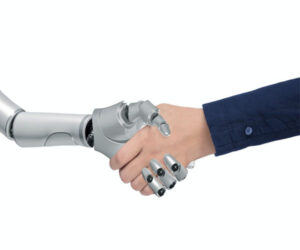AI rapidly transforms business decision-making by providing data-driven insights that reveal patterns and predict outcomes more accurately than traditional methods. Its ability to analyze vast amounts of employee data allows businesses to uncover high-potential employees by identifying traits, behaviors, and skills that correlate with strong performance and leadership qualities.
Companies can ensure a robust leadership pipeline by investing in AI-driven talent development. It drives innovation, improves retention rates and fosters a culture of continuous growth, leading to long-term business success.
How AI helps businesses identify high-potential employees
Identifying high-potential employees is crucial for building a resilient and innovative workforce. Here’s how businesses can leverage AI to reveal emerging leaders with the most significant growth potential.
1. Predictive analytics for employee potential
Using AI to analyze historical data, businesses can predict which employees will most likely excel in leadership roles. AI models can identify traits and performance patterns among successful leaders to help organizations tailor their talent strategies.
A proactive approach is important as experts predict that 97 million new roles may emerge by 2025 due to the shifting labor landscape between humans, machines and algorithms. Leveraging these insights can efficiently identify and prepare the next generation of leaders. It ensures a seamless transition and a robust leadership pipeline.
2. Behavioral analysis and personality traits
Natural language processing (NLP) allows businesses to analyze employees’ emails, performance reviews and other communications to uncover valuable insights about individual strengths, weaknesses and leadership potential. By understanding patterns in language, sentiment and tone, NLP can reveal critical behavioral and personality traits that contribute to high performance.
This analysis helps companies identify emerging talent who demonstrate initiative, collaboration and problem-solving skills. It enables more accurate assessments and personalized development strategies to nurture future leaders.
3. Skill gap analysis
Implementing AI-driven assessments allows businesses to uncover employees with untapped skills and the potential for future growth by analyzing their performance, skills and interests. These evaluations help organizations identify overlooked talent, providing personalized career development and training recommendations.
4. Social network analysis
Businesses can identify employees who build relationships and influence their peers by analyzing internal collaboration networks. AI can map out these networks through communication platforms and project management systems to uncover influencers who foster teamwork, drive projects and bridge knowledge gaps.
This insight helps organizations recognize natural leaders and who are well-positioned to advance into leadership roles. Identifying these network connectors enables companies to cultivate a supportive environment where influential employees can leverage their relationship-building strengths for broader organizational impact.
5. Pattern recognition in performance metrics
Utilizing AI to identify consistent patterns among top performers in productivity, quality, and innovation enables businesses to pinpoint essential attributes contributing to success. By analyzing vast amounts of employee data, AI models can recognize trends in behavior, skills and work habits. It distinguishes high achievers, offering actionable insights into nurturing similar qualities across the workforce.
Source : AIIBusiness.com




